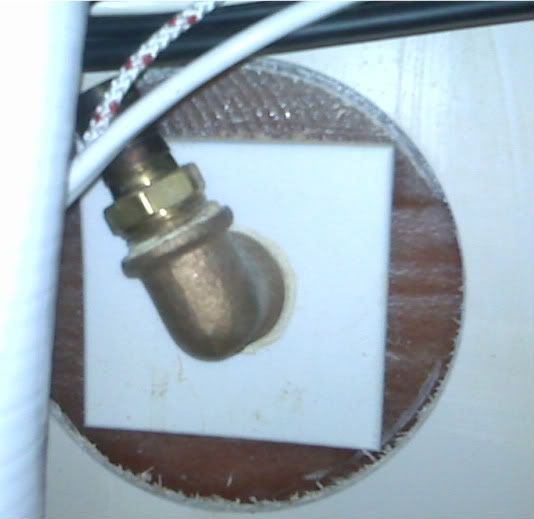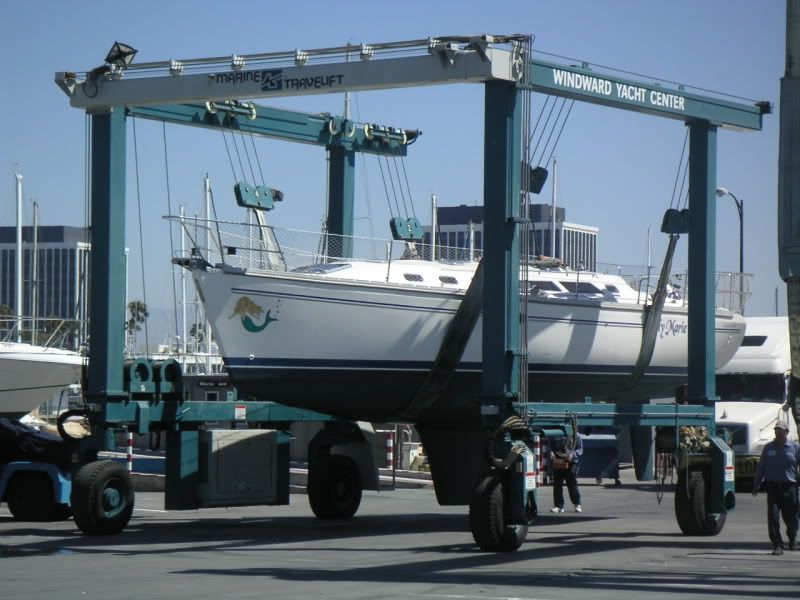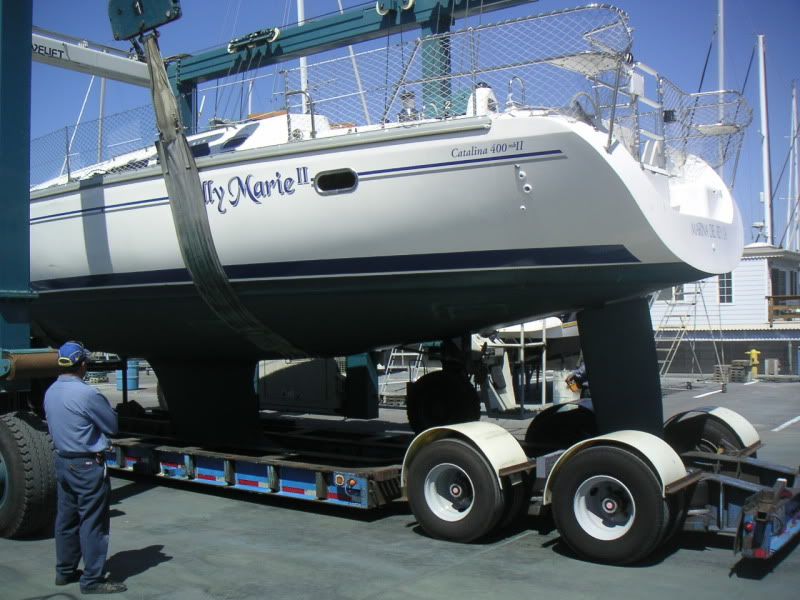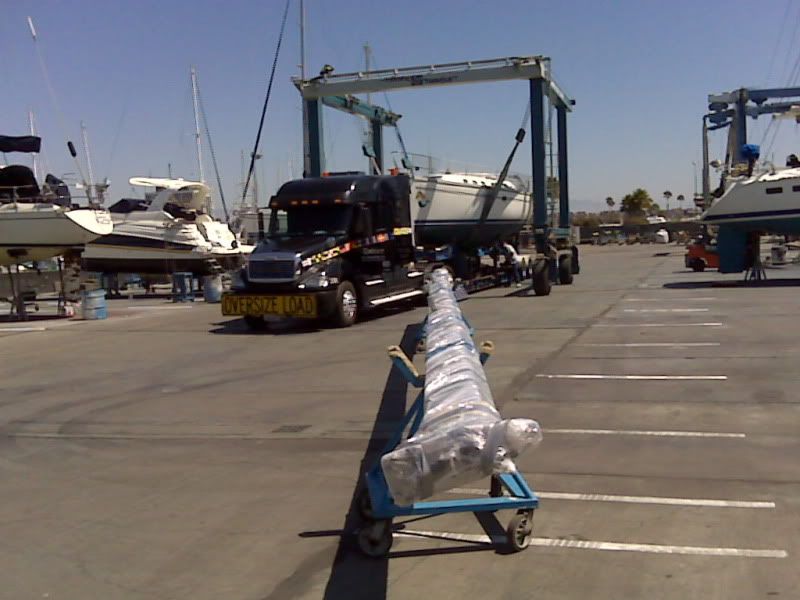One solution is to use LEDs instead of the incandescent bulbs for lighting. The LEDs last longer, burn cooler, and use about 1/4 of the amount of power as an equivalent Halogen bulb.
Legacy has about 25 interior light fixtures, not counting the shear lighting which is made up of rope lights. All but the Nav table light and head lights use 10w G4 Halogen bulbs. The bulbs in the lights in the heads are a 5w G4 Halogen frosted bulb. Not counting the Nav table light, there are 5 types of fixtures on the boat. It is nice that Catalina chose fixtures that use the same bulb. This makes keeping spares much easier. What I wanted to do was find an affordable LED alternative to the 10w G4 Halogen. The Halogen give off great light, but they are also incredibly hot. Not only is this heat unwanted in the Summer, but they are exposed so are a real burn hazard.
This is the bulb that I found. You can order it directly from the company, LEDwholesalers.com, or you can do what I did and order through Amazon.com. If you order enough from Amazon, the shipping is free. This may offset the sales tax paid at Amazon depending on where you are. LEDWholesalers.com describes this bulb as G4 Base 18 Warm White LED 183 Lumen 360 degree 12V ACDC The price as of now on these through Amazon is only $14 each, they are $16 right now from LEDWholesalers.com Either way, much less expensive than other alternatives I've found. Anyway, it produces 186 Lumens of warm white light at the cost of 2.6 watts, 220mA @ 12v.

Here is a photo of the LED bulb compared to the G4 Halogen. Notice the different in size.

I ordered three of the bulbs to try out. I finally got a chance to get down to Legacy and give them a try. It was daylight, but I installed some in the aft cabin and blocked the ports to make it dark. I then took some comparison shots of the lights.
First we have the reading lights by the aft bunk. Here are two shots. The Halogen is on the left, the LED on the right. The color balance won't be exact, the Canon Digital Rebel was set for Auto color balance since was too lazy to do a custom color balance. On my screen, the LED has a faint green cast that wasn't there in the boat.
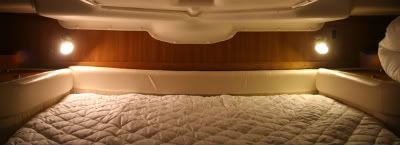
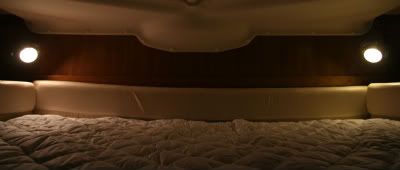
Next we've got the square lights that are in the upper corners of the aft cabin as well as one in the front cabin. I couldn't do side by side shots of these obviously, so here they are in sequence.
Here is the stock Halogen Bulb.

Here is the LED Bulb.

You'll notice there is very little difference between the two. However, here is a shot of the LED bulb in the fixture. Notice how low the LED bulb hangs. It does fit, but the three diodes on the end of the bulb are right up next to the cover. The pins of the LED are longer than the G4 bulbs,so one option would be to cut the pins shorter. Another would be to bend the pins to the side.

I think a better alternative would be to use a different bulb. One option would be the Disc Type G4 Base Side Pin 15 SMD LED, 10 Watt Holagen 197 Lumen Bulb. The pins would need to be bent at 90 degrees but it would fit and all the light would be aimed down, which is where you want it anyway. The price of this bulb from LEDWholesalers.com is $16 each.

Another alternative is a similar bulb but one that has the pins in the center back. Then you don't have to worry about bending the pins. Through Amazon again I found G4 Base LED Lamp - Rear Pin, Warm White 140 Lumen manufactured by a company called "Scintiluna". It is a back pin lamp similar to the one pictured below and was only $9 a piece. I ended up getting three of them. They claim 140 Lumens a 2w. Who knows?
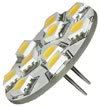
Update: I received the bulbs from Scintiluna. G4 Base LED Lamp - Rear Pin, Warm White 140 Lumen . Total cost for 3 includeing S&H was $31.47. Here is what they actually look like.


Here is the bulb installed in the fixture.

OK, next we have the small swivel spot lights that are all over the Catalina 400. These provide great lighting and it is handy they can be aimed. There are two of these light in the aft cabin right in front of the mirror above the engine. Here are a couple shots of those. Here the LED is on the left, the Halogen is on the right. Ignore the man in the mirror.


At least in my 400 (Hull #328) there are a total of three of these types of fixtures, two in the aft head and one in the front. They have a white plastic cover retained by a small phillips head screw. Inside, are two frosted 5w G4 bulbs. I have no idea why they are frosted.

The LED tower bulb fit in this fixture just fine. Here is a shot of it again with one LED bulb installed. While I don't have a picture of it, the cover went on just fine and it gave great light.

Even though that bulb fits OK in the fixture, with the I decided to try the 15 led flat, round bulb by LEDWholesalers that was pictured earlier. I think they will just fit in the fixture and should give good light. I'll update when I get those flat bulbs installed.
Update: Here is the fixture with the Disc Type G4 Base Side Pin 15 SMD LED, 10 Watt Holagen 197 Lumen Bulb Replacemnt For RV Camper Trailer Boat Marine Warm White, 1114WW bulbs installed. These were $16 each from LEDWholesalers through Amazon.
Here they are installed. The light is actually very good and much brighter than the two 5w bulbs provide. The fixture is marked not to exceed 2x5w bulbs.


I didn't take any shots of the two sconce lights in the main cabin but this LED tower bulb fits well in that fixture and gives great light.
Update: Here is the sconce light with the 18 LED tower bulb installed.

The only odd ball on my boat is the flexible light at the Nav table. It is the only fixture that uses a bayonet bulb. I wasn't able to determine the size when I was on the boat, I could tell it was either a 6w or 8w halogen bulb. I need to bring my more recent glasses to the boat. However, when I got back home and looked at the shot that I took of it, the "6w" was pretty easily readable. The wonders of digital photography. So I just need to find an LED replacement for this bulb.

Since I'm not at the boat, I don't know if it is a BA9s or BA7s bulb. My guess is a BA9s as the BA7s bases seem to be more prevalent in Europe. For now, I won't do anything with it.
